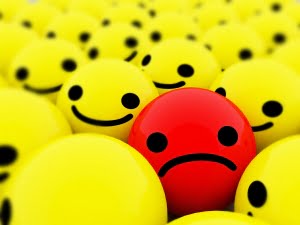 “What I’ve got they used to call the blues,” Karen Carpenter sang in Rainy Days & Mondays, and we all knew what she meant.
“What I’ve got they used to call the blues,” Karen Carpenter sang in Rainy Days & Mondays, and we all knew what she meant.
We’ve all had them…those blue days, those sad days, those days when we couldn’t put our finger on just what was bothering us, but felt defeated, played out, like if the world ended tomorrow we wouldn’t care all that much.
Over the years, the feeling Karen Carpenter sang about has been called, yes, “The Blues,” but it has also been referred as “being down,” and in recent years quite frequently as “feeling depressed.” It is an indistinct but very real feeling we’ve all had. But “feeling depressed,” is a mood, and there is a significant difference between moods –which we all have- and Mood Disorders; between “feeling depressed” and Depression, and it is important to understand what those differences are.
Everyone has “moods.” People can be in a “good mood” or a “bad mood;” they can seem sad, or they can be happy. Moods are emotional states; and they differ from emotions in that they are less specific, less intense, and less likely to be triggered by a particular stimulus or event. Moods are typically short-lived and not disruptive.
Mood Disorders, by contrast, are specific diagnoses where a significant and lasting disturbance in a person’s mood is not only the main underlying feature, but also creates difficulties for that person in normal, daily functioning.
Both moods and Mood Disorders are also different from temperament or personality, each of which is longer lasting and is the product of a person’s genetic make-up and upbringing.
Moods can be triggered by emotions or be viewed in everyday terms as “extensions” of an emotion. By way of example, a person may be angered (an emotion) by a specific stimulus –an argument, or the sense of having been cheated somehow- and that can trigger a “bad mood,” during which, for some period following, that person is short-tempered, grumpy, and generally unpleasant to be around. Good news, similarly, can lead to a person’s being in a “good mood,” a state that can also be the result of having had a good night’s sleep, or feeling no sense of stress in one’s life. Life events -such as unwanted changes in life- may contribute to a depressed mood; but people can also just “fall into” a mood with no apparent trigger having initiated the emotional state.
The sources of Mood Disorders are more varied, with competing theories suggesting that they are an evolutionary adaptation, tied to personality, the result of heredity, substance abuse, and even certain prescription drugs. It is known that there are chemicals in the brain, called endorphins that are responsible for positive moods. Other chemicals in the brain, called neurotransmitters, regulate endorphins. Most likely, depression and other Mood Disorders are caused by a chemical imbalance in the brain.
Mood Disorders generally manifest themselves in two ways, either as depressive disorders, of which there are several recognized varieties, or bipolar disorders, characterized by intermittent episodes of mania, usually interlaced with depressive episodes.
What many people are unaware of is how wide-spread and prevalent Mood Disorders are. The National Institute of Mental Health (NIMH) estimates that over 20% of the adult American population experiences a mood disorder during the course of a lifetime -20.9 million adults during any given year- with 45% of those cases being severe.
Depression is by far the most common form of mood disorder, with the Centers for Disease Control indicating that one in ten Americans report depressive episodes, and the NIMH reporting that Major Depressive Disorder is the leading cause of disability in the U.S. for people between the ages 15 and 44, that it affects approximately 14.8 million American adults -or
about 6.7 percent of the U.S. population age 18 and older in a given year- and that is it more prevalent in women than in men.
Chronic, mild depression affects approximately 1.5 percent of the U.S. adult population (about 3.3 million individuals), and bipolar disorder affects approximately 5.7 million American adults, or about 2.6 percent of the U.S. population age 18 and older in a given year. Another variation of Mood Disorder, Seasonal Affective Disorder (SAD), affects half a million people every winter between September and April, peaking in December, January, and February.
Fortunately, these conditions can be treated. There is no reason to suffer in silence or to surrender your life to any of these ailments. While everyone has their “moods,” if you’re experiencing extended periods with signs such as trouble sleeping, changes in appetite, trouble concentrating, hypersensitivity, fatigue, irritability and others, it could be more than a simple
mood-swing.
To learn more or to discuss in confidence any trouble you may be having with your mood, remember, the counselors at Capital EAP are there to help.
